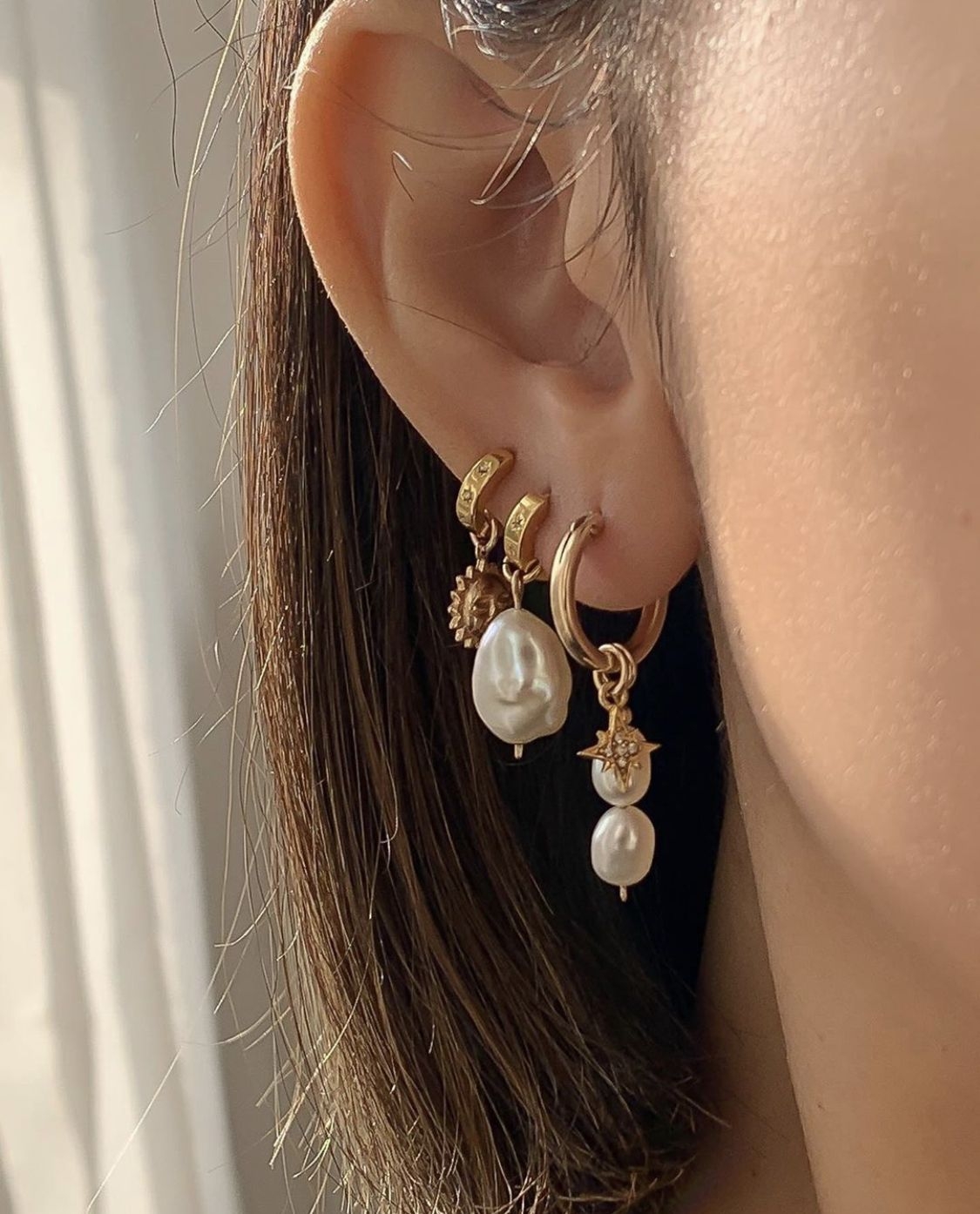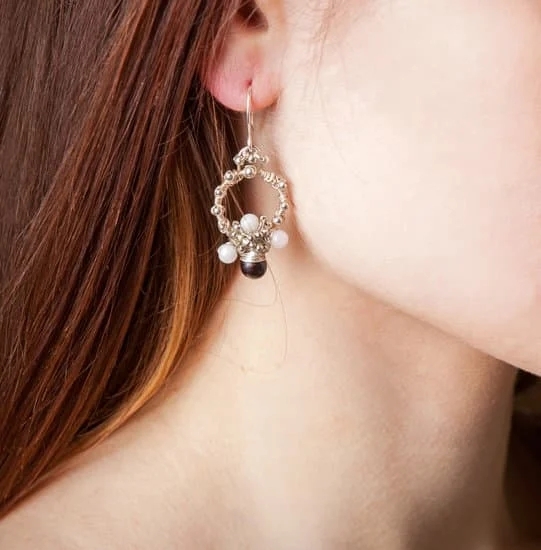Handmade jewelry can refer to any type of jewelry that is made by hand and not mass produced in a factory. Handmade jewelry often includes unique, one-of-a-kind items created with raw materials.
The use of raw materials when creating handmade jewelry provides many benefits such as the freedom to mix and match various beads and components to create creative jewelry pieces, or incorporate multiple precious or semi-precious stones that may be provided in a single package. Additionally, having control over the variety of materials used allows design options that cannot be found in pre-assembled beads and components.
Materials Used for Making Handmade Jewelry Raw Materials
When selecting the raw materials for making handmade jewelry, there are numerous options available depending on your own personal style. Popular choices include simple glass beads, wooden beads, shell disc strands, gemstone chips and slices, pearl strands and a variety of crystals and cabochons.
In addition to these basic materials, metals such as sterling silver findings, gold plated findings or brass components are also featured prominently in many designs. Each category has its own unique characteristics which makes it easy to design something unique.
Tools Necessary When Working With Handmade Jewelry Raw Materials
In addition to the right selection of raw materials for making handmade jewelry pieces, owning appropriate tools is essential for successful crafting sessions. Most necessary tools will depend on the type of bead stringing technique used to construct jewelry pieces from individual parts but some universal tools include needle-nose pliers with cutters (for cutting wire or ribbon), flat nose pliers (for opening jump rings) round nose pliers (for looping wire), crimpers (for adding texture) , tweezers etc.
There are also different types of adhesives suitable for applying glue onto clasps for an extra secure hold on each component piece. With these essential tools you’ll have the basics needed to get yourself started designing high quality handmade jewelry items.
Exploring Different Types of Raw Materials Used for Jewelry
When it comes to jewelry making, the materials used are just as important as the end product. Handmade jewelry requires a wide variety of raw materials, from precious metals and stones to waxes and casting molds. Each type of material has its own purpose in the creation process, ranging from shaping and design to jewel protection and enhancement. Understanding these different types of raw materials used for jewelry can help you select what works best for your handmade creations.
One of the most commonly used types of raw material for jewelry is metal. Common metals that are used include gold alloys such as brass or Sterling, aluminum, copper, and silver.
While some pieces use only one type of metal, others may combine two or more metals with further enhancements like plating and oxidizing to achieve a specialized look. Metals are often shaped into beads, hoops, clips, links and other designs with tools like saws and drills before being made into the finished piece.
Gemstones come in many shapes like round cabochons, faceted brilliant-cuts or irregularly shaped freeform gemstones that are cut to specification. The choice in gems depend upon their hardness as well as how they reflect light when cut at certain angles.
This type of raw material is carefully selected by considering carats, coloration clarity and inclusions which makes it invaluable in creating unique handmade jewelry designs. Gemstones can also be treated with chemicals or heat for enhanced color transformations so that it gives off special electrical frequencies which are aesthetically desirable.
In order to secure gemstones on jewelry pieces safely so they don’t slip out over time, specialized settings hold them in place using claws. Depending on the setting style selected finishes can range from simple soldering techniques to intricate bead weaving or wire wrap techniques that keep stones securely without sacrificing design aesthetics.
Other than metal findings other elements like resin , plastic beads , crystal clusters , pearls , acrylics , glass beads or even waxes could be used depending upon what creative vision would be achieved with these components. Additionally craft wires specially designed for jewelry making act as support structure not just structurally but also add color accents while various quality glues facilitate sticking pieces together securely during their fabrication process.
In-Depth Look at Popular Raw Materials
Handmade jewelry is an art form that requires the use of various raw materials to create a special piece of jewelry. Raw materials can be anything from precious metals like gold and silver to semi-precious stones and crystals. While there are so many options available, some of the most popular materials used to craft unique pieces are gemstones, pearls, shells, wood, and glass.
Gemstone jewelry has surged in popularity over recent years thanks to its beautiful sparkle and variety of color options. Not only are gemstones beautiful on their own, but producers also combine them with other raw materials like sterling silver and gold-plated metals to create even more spectacular pieces. Gemstones make excellent gifts due to their timeless beauty and shimmering finish. They also bring a unique touch to any piece of handmade jewelry they are incorporated into.
Shells are relatively inexpensive when compared to stone jewelry but can still provide an impressive look when used correctly in design. When made from natural shells like abalone or pearlescent mother of pearl, it provides an organic feel that no store-bought piece can replicate.
Many pieces for designed using this material have intricate shapes cut out around the edges offering the wearer a piece that stands out from regular jewelry between the texture, color combination and design options available only through this medium.
Wood material provides a much needed contrast against metal or stone based raw materials thanks to its light weight tendencies as well as its availability in various shades which makes it easier for designers and makers alike to fashion amazing pieces with ease.
The most popular woods used in handcrafted jewelry today include ebony, rosewood or even teakwood as these all lend themselves incredibly well for use with colorful gems or polished metals depending on the desired look achieving by whomever wears it.
Cost of Handmade Jewelry and Ways to Minimize Spend
Cost can be an important factor when looking to purchase handmade jewelry. While some may be content with simply selecting the most affordable option available, it is often wise to take the time to consider cost in other ways.
If a customer is willing to invest their time, they not only have potential of acquiring a beautiful and unique piece of art for a fraction of what is typically expected, but may also find themselves presented with more creative opportunities by exploring the world of different raw materials to work with.
One of the most common raw materials used for handmade jewelry are precious metals such as silver or gold. In terms of affordability, these two materials tend to represent what is both traditionally found at higher price points as well as a reliable base material for any craft.
However, their expense means that those looking to minimize their spend should consider opting instead for silver or gold filled metals or alloyed mixtures of lesser-valued metals such as bronze, brass, or copper. Although these are slightly limited in terms of color options and care requirements (as opposed to purer forms), they provide significant cost savings without sacrificing quality in most cases.
In addition to traditional metal materials, there are also synthetic gems that can be used for handcrafted jewelry pieces. These come in a wide array of colors and styles allowing each artisan ample room for creativity and personal expression due their relative affordability compared to natural gemstones.
Furthermore, new technology has provided innovative ways outside seen before (such as 3D printing) to manufacture stones with almost indistinguishable differences between faux and authentic versions – this further opens up possibilities at reducing costs while presenting no reduction in quality or aesthetics.
How to Source Quality Made Raw Materials
When looking for raw materials to create handmade jewelry, it is important to source materials of a high-quality design. Finding the right supplier for these raw materials can be made easy with a few key steps.
Firstly choosing the type of material will set the tone for the entire project, as each material has its own unique characteristics that are made for specific designs. Guidelines such as budget, final look, and purpose should be taken into consideration when making this decision.
Next, it is highly recommended that buyers investigate their potential suppliers by checking eBay seller ratings, marketplace feedback, or better business bureau ratings if possible. This helps to ensure quality control and guarantees you get what you pay for in terms of quality and delivery time frame. Additionally, reviews from previous buyers provide insight on products purchased as well as customer service received prior to purchase decision being made. It helps eliminate any unwanted surprises after purchasing the desired material.
Customers should also ask questions regarding shipping times and package arrival expectations so they have an accurate timeline of when supplies can start their projects with minimal delays. Other questions that could be posed include: Do potential suppliers have samples? Is customization available?
Does ordering require a minimum purchase amount? Knowing answers to these questions in advance gives confidence to buyers that their purchases are being handled in a professional manner. As handmade jewelry projects are expensive investments, customers can save money by asking about bulk discounts or flat-rate shipping fees from suppliers depending on volume needed so that wallet-saving measures are taken throughout the entire shopping journey.
Different Styles of Handcrafted Jewelry Using Raw Materials
The raw materials used in the creation of handmade jewelry can be as diverse and unique as the pieces themselves. While there are some traditional materials like silver, gold and gems, artists have been getting more creative with their chosen medium. Pieces can be crafted from wood, bone, paper, shells and other organic material. More modern materials like acrylics and resins are also very popular in contemporary styles.
Not every material is suitable for all types of jewelry though; wood is usually used to create pendant necklaces or earrings while paper-based jewelry typically leans towards a less formal style. For instance, origami animals could become fun statement earrings or larger paper flowers could be used to craft intricate pendants for necklace charms.
Natural stones such as turquoise or quartz can be faceted into simple yet chic wearable pieces. Precious metals like silver and gold remain timeless materials yet careful surface treatments can give these pieces a distinct look that can work with many fashion styles.
Combining different raw materials when crafting custom handmade pieces is a great way for designers to express their individual style. Unique textures created through such hybridization gives each piece character even if only small elements made from different bases are combined in one design. Layering multiple media helps tailor each accessory to the wearer’s tastes while still maintaining cohesion in the piece overall.
Creative and Unique Uses for Jewelry Raw Materials
One creative use of jewelry raw materials is to craft unique and trendy pieces that stand out in the fashion world. With a variety of metal materials such as silver, gold and platinum, artisans can create earrings, bracelets, necklaces and other designs with very expensive raw materials that are sure to make an impactful presence when wearing them.
Plating these materials with vibrant colors including rose gold or gunmetal can also add a hint of sparkle to the pieces which makes them even more eye-catching.
When used with gemstones or timeless pearls for example, this adds further dimension and texture to the jewelry. It also allows wearers to accentuate any outfit no matter the occasion.
Raw materials such as wire are great for crafting spectacular pieces with intricate details. Artisans have used wire wrapping techniques for centuries now, forming it into multiple looping patterns on its own or together with other metals and stones. Long strands of wire intricately twisted forms the perfect backdrop by giving off an ethereal vibe adding plenty of personality to those who wear it.
These pieces always stand out due to their delicate design which make them look very mannerly and elegant at the same time. And using color wires can really help make these one-of-a-kind rings, pendants and earrings look stunning on anyone.
Last but not least, leather is also an important jewelry raw material when making modern designs today. Using soft leather strings or strips is great for statement necklaces that exude a bold heavy metal sense yet remain lightweight enough to wear comfortably through long days and nights.
Not only does leather offer great flexibility for both hanging beads onto it in shapes like double helixes etc., but it also helps ensure the piece stays put no matter what circumstance you may find yourself in. Whether it be creating special handmade gifts from birthdays parties, anniversaries dates or simply just trying something new; leather materials will never let you down; making your piece terrifically eye catching.
Final Thoughts
Handmade jewelry is a distinct form of art that many appreciate. It allows the creator to express themselves in a unique way, while also providing an individualized product of quality.
The raw materials provide endless possibilities when creating handmade jewelry, from precious metals and stones to acrylic beads and natural elements like wood or shells. Whether you are making earrings, necklaces, bracelets or rings – there is something for everyone when it comes to all the various types of raw materials that can be used for handmade jewelry crafting.
Raw materials come in many shapes and sizes – from tiny glass beads suitable for intricate and delicate designs, to larger pieces of wood which can be carved and decorated in a variety of ways. This type of versatility allows the crafter to truly customize their own unique pieces while expressing their own individual style.
The options are limitless – from simple yet sophisticated wooden bracelets adorned with a few colorful beads to bold statement pieces crafted with semi-precious gemstones and metal wirework, each piece is entirely one-of-a-kind.
When exploring the artistry of handmade jewelry, raw materials provide plenty of opportunities for creativity. You can source your materials locally at craft stores or online shops offering wide variety packs that contain everything you need for your project such as colors, shapes, sizes and textures – perfect if you’re new to this type of activity. If you don’t want to spend much money on materials but want something special – recycled items are always popular search topics.
From upcycling old silverware into lockets or turning broken pottery into beautiful pendants – the creative possibilities really are endless. Exploring the world of handmade jewelry through raw material could be just the thing you need if you’re looking for creative project ideas this season – whether it’s gift-giving or just a fun activity on a weekend afternoon.

Welcome to my jewelry blog! My name is Sarah and I am the owner of this blog.
I love making jewelry and sharing my creations with others.
So whether you’re someone who loves wearing jewelry yourself or simply enjoys learning about it, be sure to check out my blog for insightful posts on everything related to this exciting topic!





